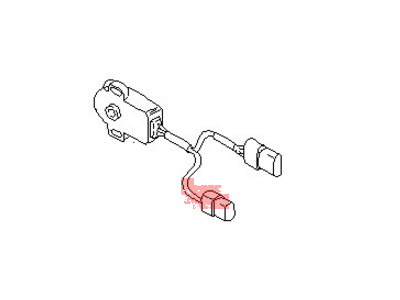×
- Live Chat
- 1-888-726-6993

My Garage
My Account
Cart
Genuine Nissan Quest Throttle Position Sensor
TPS Switch- Select Vehicle by Model
- Select Vehicle by VIN
Select Vehicle by Model
orMake
Model
Year
Select Vehicle by VIN
For the most accurate results, select vehicle by your VIN (Vehicle Identification Number).
5 Throttle Position Sensors found
Nissan Quest Switch Throttle
Part Number: 22620-12G11$169.84 MSRP: $258.35You Save: $88.51 (35%)Ships in 1-3 Business DaysNissan Quest Throttle Position Switch
Part Number: 22620-65F11$109.86 MSRP: $167.10You Save: $57.24 (35%)Nissan Quest Throttle Position Switch
Part Number: 22620-65F21$109.86 MSRP: $167.10You Save: $57.24 (35%)Nissan Quest Throttle Position Switch
Part Number: 22620-65F20$115.50 MSRP: $167.10You Save: $51.60 (31%)
Nissan Quest Throttle Position Sensor
If you need any OEM Nissan Quest Throttle Position Sensor, feel free to choose them out of our huge selection of genuine Nissan Quest Throttle Position Sensor. All our parts are offered at unbeatable prices and are supported by the manufacturer's warranty. In addition, we offer quick shipping to have your parts delivered to your door step in a matter of days.
Nissan Quest Throttle Position Sensor Parts Questions & Experts Answers
- Q: What steps should be taken if tests indicate that a Throttle Position Sensor (TPS) is functioning properly but driveability issues persist on Nissan Quest?A: If test show that a sensor is sending good data back to the PCM and is not causing a driveability complaint, check the wiring harnesses between the sensor and PCM for opens or shorts. If none of these concerns are observed, take the automobile to a dealer service department or an accredited mechanic shop. TPS is a variable resistance type of potentiometer mounted on the side of the throttle body and is tightly screwed to the throttle shaft. The PCM also senses the output voltage of the TPS to decide on the calibration of fuel quantity supplied according to the angle of the throttle valve. An improperly functioning TPS can result in fluctuating fuel supply and unstable idle, which in turn sets a check engine light with a diagnostic trouble code. Every car, truck, and non-commercial vehicle manufactured has a closed throttle position switch in the throttle angle detection system, placed at specific throttle angle points, and connected to the ATXCM. To monitor the reference voltage from PCM to TPS unplug the TPS harness connector then probe the REF and GND terminals; it should read 5.0 volts ignition on. If reference voltage is missing out, it could be a case of open circuit or a bad PCM. Subsequently, seek the resistance at the SIG and GND terminals while varying the throttle; it should be 1 K-ohms with the throttle closed and 9 K-ohms with full throttle and gradually scale up to this value as the throttle is opened. As for the closed throttle position switch, check the continuity with the throttle closed and there should be no continuity with the throttle partly or fully opened. If the readings are off, then replace the TPS. To remove the TPS, unscrew the negative terminal of battery, take out the air intake duct, and then unplug the TPS, and closed throttle position switch connectors. Four bolts are used to fix the TPS to the throttle body and to demount you would require to unscrew those bolts Disassemble the old TPS using screws turned loose simultaneously, for the installation of the new TPS and then the TPS should be adjusted. For adjustment, you require to take off the air intake duct, free the screws in the TPS, make a backprobe of the SIG and GND terminals with the help of a digital volt meter and estimated voltage must be approximate 0.4 to 0.5 volts when the throttle is close. In case no adjustment is possible and the voltage is wrong, turn the TPS body in the appropriate direction to bring voltage on the right level, and only then fasten the mounting screws tightly.
Related Nissan Quest Parts
Browse by Year
2003 Throttle Position Sensor 2002 Throttle Position Sensor 2001 Throttle Position Sensor 2000 Throttle Position Sensor 1999 Throttle Position Sensor 1998 Throttle Position Sensor 1997 Throttle Position Sensor 1996 Throttle Position Sensor 1995 Throttle Position Sensor 1994 Throttle Position Sensor 1993 Throttle Position Sensor



















